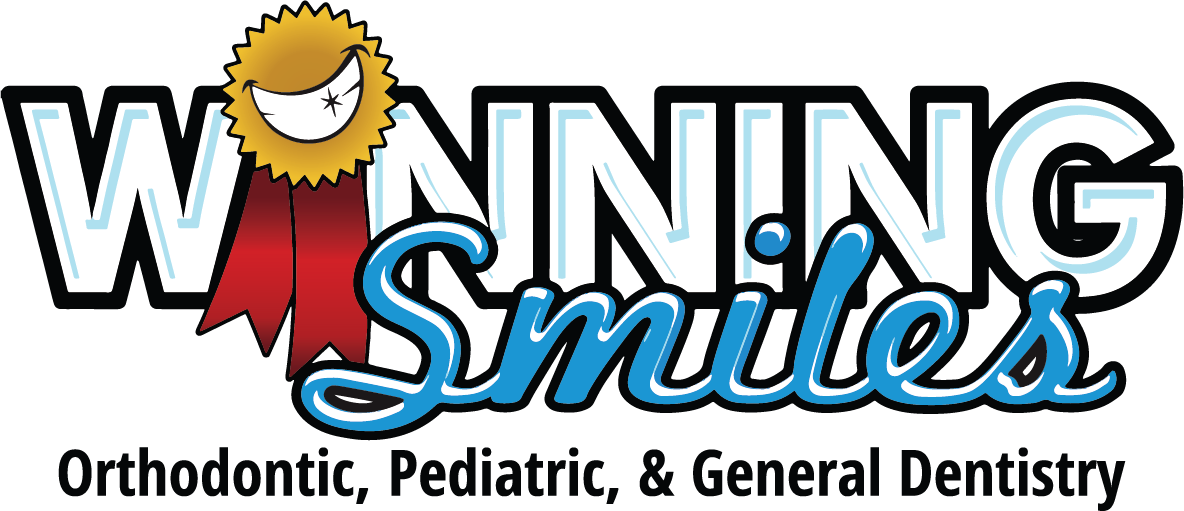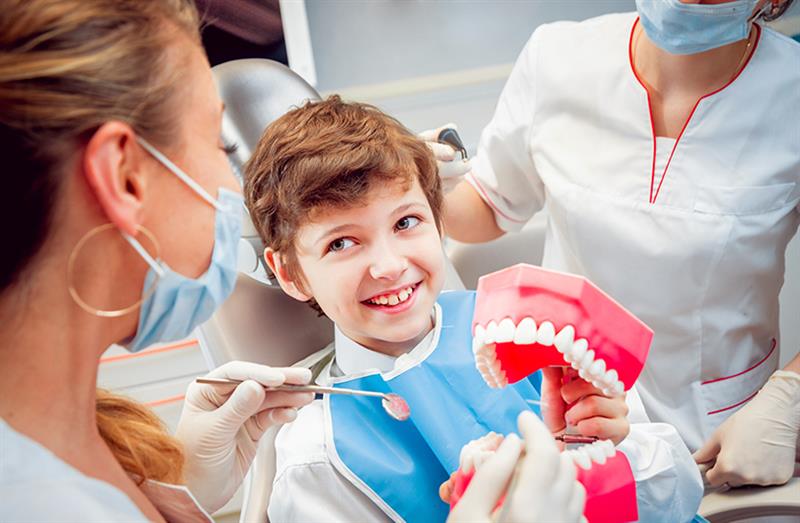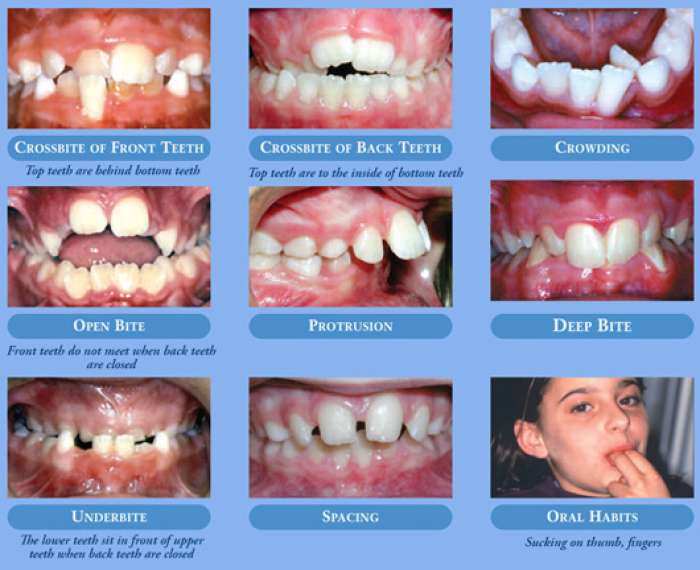
Family Orthodontist in Buffalo, NY Area
Orthodontic patients are treated by our experienced orthodontists with years of education and experience. Our providers place a significant emphasis on the growing dentition and facial structure of children and teens.
There are many factors that determine if your child could benefit from orthodontic treatment. If you would like more information about our affordable braces or wish to set up a consultation with a doctor, click "Schedule a Consultation".
INVISALIGN, CLEAR ALIGNERS FOR KIDS, TEENS & ADULTS
With offices in Amherst, Orchard Park and Buffalo, Winning Smiles makes it easy to set up your consultation for Invisalign. Since Invisalign is customized to the unique needs of the patient, kids, teens and adults all may be good candidates for Invisalign clear aligners.
IMPROPER BITES
Orthodontics is a specialty of dentistry that is concerned with the study and treatment of malocclusions (improper bites), which may be a result of tooth irregularity, disproportionate jaw relationships, or both. Orthodontic treatment can focus on dental displacement only, or can deal with the control and modification of facial growth during childhood and adolescence.
Orthodontic Treatments
TYPES OF APPLIANCES
REMOVABLE APPLIANCES
Removable appliances may be used to move selected teeth, to hold selected teeth in place, to influence growth of the jaws, and to influence tooth eruption. They are often used in conjunction with fixed appliances. Removable appliances cannot be used to treat all orthodontic problems. It takes skill and experience to recognize conditions that can be successfully treated with removable appliances. Because the patient can easily remove the appliance, good compliance is required to achieve the desired outcome.
RETAINERS
Once the teeth are moved into their correct position, the braces are removed. The next step is to use retainers to hold the teeth in the desired position. Retainers must be worn as instructed or the teeth WILL move back toward their original positions. In some cases, we may bond a wire to the back of your lower or upper front teeth to prevent their movement. Remember; wear them in your mouth, not in your pocket. Retainers work when worn as instructed! Clean your retainers! After meals, clean all parts of the retainer with a tooth brush. Handle your retainers with care. Retainers are easy to lose. If you take your retainers out, always place them in your retainer case for safety.
ELASTICS
Attached to your braces, elastics (rubber bands) exert the proper force that creates the right amount of pressure to move teeth. In order for this force to remain constant, elastics must be worn all the time and changed every day. Any time missed in wearing your elastics will only make your treatment take longer, so remember these things:
- You are responsible for placing the elastics on your braces between appointments. Make sure to wear them as instructed. Remove them only when eating and when brushing your teeth and gums, then put them back on immediately.
- Always carry a few elastics with you, so if one breaks you can replace it right away. If your supply is low, call the office and we will mail you an additional supply of elastics.
- If you forget to insert your elastics one day, don’t double up the next day just follow your regular instructions.
- Elastics become worn out. When they lose their elasticity, they don’t provide the proper pressure on your teeth and jaws. It is very important to change them as directed, even when they are not broken.
IF YOUR ELASTICS BREAK FREQUENTLY, A WIRE OR BAND LOOSENS, OR A HOOK BREAKS OFF CALL OUR OFFICE IMMEDIATELY. DON’T WAIT UNTIL YOUR NEXT APPOINTMENT. THESE PROBLEMS SHOULD BE CORRECTED AS SOON AS POSSIBLE!
TYPES OF BITES
CROSSBITE
One or more of the upper teeth biting on the inside of the lower teeth characterizes a crossbite. A crossbite can occur in the front and/or the sides of the mouth. Early correction of crossbites is recommended and necessary.
Crossbites should be corrected because they can:
- Cause premature wear of the teeth.
- Cause gum disease including bone loss.
- Cause asymmetrical development of the jaws.
- Cause dysfunctional chewing patterns.
- Make your smile less attractive.
- Be related to jaw joint dysfunction (TMJ).
How can a crossbite be orthodontically corrected? If there is a single tooth crossbite, braces or a retainer may be used to move it into the correct position. If multiple teeth are in crossbite, a palatal expander of some type is normally required.
OPENBITE
Inadequate vertical overlap of the front teeth characterizes an openbite. It is caused by oral habits such as tongue thrust, digit sucking, or jaws that don’t grow evenly. Timing of treatment is critical to the overall success of the therapy.
Openbite should be corrected because it can:
- Cause premature wear of the back teeth.
- Cause dysfuctional chewing patterns.
- Make the smile less attractive.
- Be related to jaw joint dysfunction (TMJ).
How can an openbite be orthodontically corrected? Openbite can be corrected through growth modification of the jaws; extrusion of the front teeth; and in some severe cases surgical correction is required for the jaws. Breaking oral habits such as digit sucking will facilitate the correction of an openbite and make the result more stable. Early recognition and treatment is critical to avoiding surgical intervention.
OVERBITE
Overbite is a measure of the vertical overlap of the upper and lower front teeth. Excessive overbite may be caused by disproportionate eruption of front teeth or over development of the bone that supports the teeth. Excessive overbite is commonly seen in conjunction with a Class II relationship (see below). Overbite is also known as a deep bite.
Overbite should be corrected because it can:
- Cause improper functioning of your front teeth.
- Result in the lower front teeth biting into the gum tissue of the palate leading to periodontal problems.
- Cause unusual wear of the lower front teeth.
- Make your smile less attractive.
How can an overbite be orthodontically corrected? Overbite can be corrected through orthodontic leveling of the front and/or back teeth.
OVERJET
Overjet is measure of the horizontal relationship of the upper and lower front teeth. It is often called buck teeth and is commonly confused with overbite. Excessive overjet may be caused by improper alignment of the molars (Class II relationship), a skeletal imbalance of the upper and lower jaw(s), flared upper incisors, missing lower teeth, crowded or tipped back lower teeth, or a combination of all. In addition, oral habits such as digit sucking or tongue thrusting can exacerbate the condition.
Overjet should be corrected because it can:
- Prevent proper functioning of the front teeth.
- Lead to premature wear.
- Make your smile less attractive.
UNDERBITE
The lower teeth biting in front of the upper teeth characterizes an underbite. An underbite is usually caused by undergrowth of the upper jaw, overgrowth of the lower jaw, or a combination of the two (Class III relationship). Underbite can also be caused by tipped back upper incisors, flared lower incisors, missing upper teeth, or a combination of all.
Early correction of underbite is recommended because it can:
- Prevent proper functioning of the front and/or back teeth.
- Be related to jaw joint dysfunction (TMJ).
- Make your smile less attractive.
How can an underbite be orthodontically corrected? Underbite can be corrected by growth modification of the jaws; extraction of teeth; and in some cases surgical movement of the jaws.
IMPACTED TEETH
An impacted tooth is one that has failed to erupt normally into the mouth and remains partially or totally covered by the gums and/or bone. Impactions can be caused by improper position of the developing tooth bud, premature loss of primary teeth, and crowding. Wisdom teeth are the most commonly impacted teeth, but canines and premolars are also commonly impacted.
This problem should be corrected because it can:
- Cause damage to the root structure of adjacent teeth.
- Leave unwanted spaces.
- Lead to improper functioning of the teeth.
- Cause asymmetric alignment of the teeth.
How can impacted teeth be orthodontically corrected? Usually the impacted tooth is exposed and orthodontically moved into the correct position. Correction of impacted teeth often involves a minor surgical procedure performed by an oral surgeon working closely with our practice. This will allow us to guide the impacted tooth into the proper position.
MISSING TEETH
Missing teeth can be the result of congenital absence (the tooth fails to develop), trauma, or dental extractions.
This problem should be corrected because it can:
- Cause improper functioning of teeth.
- Cause premature wear of teeth.
- Cause asymmetric alignment of the teeth.
- Make your smile less attractive.
How can missing teeth be orthodontically corrected? Depending upon the situation, the space can be closed with braces or opened for tooth replacement. A bridge or dental implant is used to replace the missing tooth if a space is created.
CROWDING OF TEETH
Crowding is the lack of space for all the teeth to fit normally within the jaws. The teeth may be rotated or displaced. Crowding occurs when there is disharmony in the tooth- to-jaw size relationship or when the teeth are larger than the available space. Crowding can be caused by early or late loss of primary teeth, improper eruption of teeth, or a genetic imbalance between jaw and tooth size.
Crowding should be corrected because it can:
- Make it much more difficult to properly clean all the surfaces of your teeth.
- Increase the chances of dental decay (because of inadequate cleaning).
- Increase the chances of gum disease (because of inadequate cleaning).
- Make your smile less attractive.
How can crowding be orthodontically corrected? Extra space can be created by expansion of the arches or extraction of teeth. Once space is created, braces are used to align the teeth. Correction of crowding can help prevent dental decay and periodontal disease by improving the ability to remove plaque from the teeth.
SPACING OF TEETH
Spacing is the opposite of crowding and is an excess of available space, resulting in gaps between the teeth. This generally occurs when the teeth are smaller than the available space. Protrusive teeth, missing or impacted teeth, or abnormal gum tissue attachments can also cause spacing.
Spacing should be corrected because it can:
- Result in gum problems due to the lack of protection by the teeth.
- Prevent proper functioning of the teeth.
- Make your smile less attractive.
How can spacing of the teeth be orthodontically corrected? Moving the teeth together and properly aligning them within the jaws can close the spaces.
CLASSIFICATION OF THE TEETH
The classification of bites are broken down into three main categories: Class I, II, and III. This classification refers to the position of the first molars and how they bite together. Bite classification may also be used to describe the level of treatment required to correct the bite.
CLASS I:Class I is a normal relationship between the upper and lower teeth and jaws or balanced bite.
CLASS II: Class II is where the lower first molar is posterior (or more towards the back of the mouth) than the upper first molar. In this abnormal relationship, the upper front teeth and jaw project further forward than the lower teeth and jaw. There is a convex appearance in profile with a receding chin and lower lip. Class II problems can be due to insufficient growth of the lower jaw, an over growth of the upper jaw, or a combination of the two. In many cases, Class II problems are genetically inherited, and can be aggravated by environmental factors such as digit sucking. Class II problems are treated via growth redirection to bring the upper and lower teeth and jaws into harmony.
CLASS III:Class III is where the lower first molar is anterior (or more towards the front of the mouth) than the upper first molar. In this abnormal relationship, the lower teeth and jaw project further forward than the upper teeth and jaw. There is a concave appearance in profile with a prominent chin. Class III problems are usually due to an overgrowth in the lower jaw, an undergrowth of the upper jaw, or a combination of the two. Like Class II problems, they can be genetically inherited.
EARLY TREATMENT/TWO PHASE ORTHODONTICS
Two-phase orthodontic/orthopedic treatment is a very specialized process that encompasses jaw and facial charges (orthopedics) and tooth straightening (orthodontics). The emphasis today on living longer, staying healthy, and looking attractive requires optimum treatment results. The major advantage of two-phase treatment is to maximize the opportunity to accomplish the ideal healthy, functional, aesthetic, and comfortable result that will remain stable. The first phase of orthodontics is commonly referred to as the interceptive phase and the second phase is the corrective phase. An orthodontic evaluation is necessary to determine if your child is a good candidate for two-phase orthodontics.
THE GOALS OF FIRST PHASE (INTERCEPTIVE) TREATMENT ARE:
- To develop both the upper and the lower jaws sufficiently to accommodate all of the permanent teeth.
- To correctly relate the upper and lower jaws to each other.
- Limit the time necessary for the second phase of treatment.
- Avoid later removal of permanent teeth to correct overcrowding.
- Avoid surgical procedures to align the upper and lower jaws.
THE GOALS OF SECOND PHASE TREATMENT ARE:
- Provide each tooth a position where it is in harmony with the cheeks, tongue, jaws, jaw joints and other teeth.
- A bite which is stable, functional, and looks attractive.
The disadvantage of waiting for complete eruption of the permanent teeth and having only one phase of
treatment is the possibility of a compromised result that may not be functionally healthy or stable and may require preventable adult tooth extraction or jaw surgery


